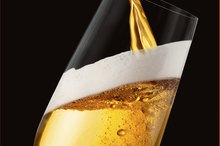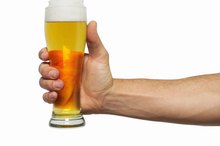Calories of Guinness Stout Beer
Guinness is a dark stout beer that is brewed with Irish barley, brewers yeast, hops and water. The water used to brew Guinness comes from Lady’s well, a source of natural spring water in the Wicklow mountains. Guinness is often referred to as “liquid bread” or a “meal in a glass.”
Calories
One pint is equivalent to 16 fl. oz. A pint of draught Guinness contains 168 calories, and has a 4 percent alcohol content. Guinness extra stout has a 6 percent alcohol content and provides 235 calories per glass.
Nutrition
How Many Calories Are in Guinness Alcohol?
Learn More
One pint of regular Guinness contains 13.3 g of carbohydrates. Guinness has zero fat grams and is also fiber-free. Although Guinness has been promoted as a rich source of iron, one pint contains just 1.1 mg. The recommended daily allowance is 14 mg of iron for women and 8.7mg for men.
Considerations
If you are on a weight loss diet, drinking alcohol will hinder your progress as the body will first burn the alcohol for energy instead of burning fat.
Related Articles
References
Writer Bio
Deborah Green has been providing online content in the health and fitness industries since 2001. She holds a Bachelor of Arts in English language teaching from Sussex University and is pursuing a Bachelor of Arts/Bachelor of Science in health studies from The Open University.









